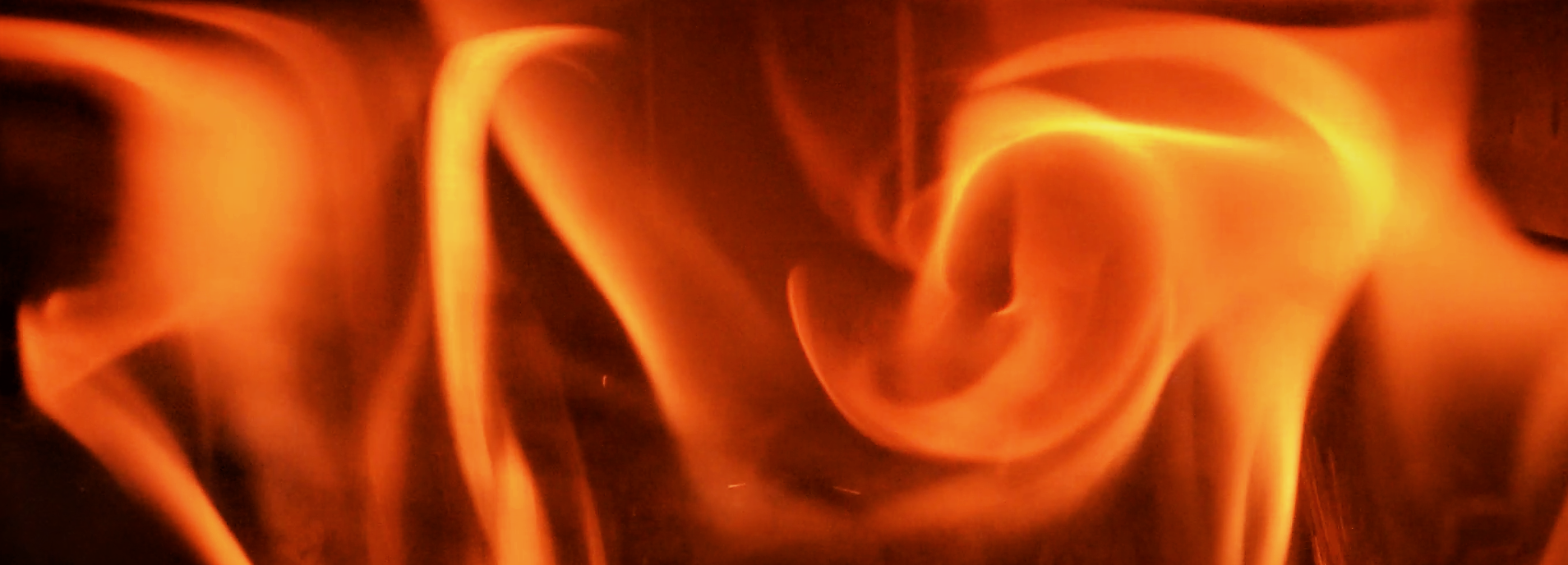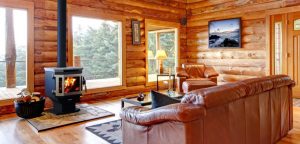How do you make a clean wood burning stove? Swirl it.

A roaring fire is great – except for all of the smoke and the soot. But did you know that changing the shape of the flames in a fire can make it cleaner? When you swirl the flames, like we do in our Catalyst clean wood burning stoves, there is less smoke and less soot. It’s one big reason Catalyst is so much cleaner than traditional wood stoves. Check out a video of our fire vortices below, and then read on to learn more about wood smoke and how Catalyst gets rid of all the pesky pollutants and health issues traditional wood stoves have to deal with. We’d say that, with our stove, those problems go up in a puff of smoke, but then we’d be lying. It’s more like they get lost in the vortex.
Over time, as any wood burner can tell you, wood smoke from wood burning stoves get on everything: your walls, furniture, clothes, house and car. Even more importantly, wood smoke inhalation can also lead to health issues. In some parts of the country it is a leading cause of lung disease, asthma, and respiratory illness.
Wood burning stoves don’t need to be dirty though. With the latest advancements in combustion science and engineering, it is possible to have a wood fire without all of the smoke. Catalyst is MF Fire’s clean wood burning stove, winning the MIT Clean Energy Prize and back-to-back low emissions prizes versus the industry’s best at the Wood Stove Decathlon and and Next Generation Wood Stove Design Challenge. MF Fire solves the issue that make wood stoves dirty by making clean wood burning stoves that are virtually smoke and soot-free.
To help protect against these emissions, the U.S. Environmental Protection Agency released rules limiting particulate emissions of wood stoves sold after January 1, 2020 to just 2.0 grams per hour, or more than ten times less than the 15 to 40 grams per hour that an older wood burning stoves can emit. Almost no existing wood stoves stand up to these new health standards – but MF Fire’s Catalyst does.
The Catalyst clean wood burning stove was one of the first wood stoves that went through the EPA’s new rigorous test method, and one of the only stoves that beat the new 2020 emission standards.
How does MF Fire make our clean wood burning stoves? To understand we have to learn a little bit more about smoke and fire.
What is wood smoke?
Fire is a chemical reaction, where oxygen from the air reacts with fuel to produce carbon dioxide, water, and heat. But wood can be difficult to burn. Wood is primarily made up of the molecules cellulose, hemicellulose and lignin. These molecules are long chains of carbon and hydrogen atoms. To burn completely, these long chains must break completely apart, which can be difficult to do. If they don’t break apart, the fire produces what are called “products of incomplete combustion”. These products of incomplete combustion are what make up smoke.
There are a wide variety of chemicals found in smoke, including carbon monoxide,volatile organic compounds, toxics, and small globs of carbon called soot or particulate matter. Particulate matter is of particular concern. Particulate matter with diameters under 2.5µm (PM2.5) are hazardous to human health in high concentrations. This is because these small particles can work their way through the sensitive membranes of the lungs when inhaled. This particulate matter mixed in with the hot gases of the fire is what makes smoke visible and dangerous.
How is Catalyst a clean wood burning stove?
Catalyst is the first smart stove, delivering an efficient, clean, and safe fire. Catalyst burns cleaner than other wood stoves because it uses a carefully controlled secondary combustion system. Secondary combustion introduces additional air above the main flames. Secondary combustion is used to “burn off” the smoke produced by the initial wood fire, eliminating the products of incomplete combustion. Catalyst’s smart controller carefully monitors this secondary combustion, constantly adjusting to maintain the fire in the sweet spot.
The video above shows a small flame swirling in the secondary combustion area of the stove. The fire in a wood stove is an example of a diffusion flame, meaning that the smoke and the oxygen from the air need to mix together to burn. To burn as much of the smoke as possible, these gases need to be as well mixed as possible. One great way of doing that is by introducing swirl, as shown in the video above. In our Catalyst wood burning stoves, the secondary combustion system makes swirling vortices, that you can see here. As a vortex spins, it stirs off leftover fuel from the primary burn and the new oxygen that we’re adding, mixing them together, and burning off any leftover particulate matter so the exhaust gases from the stove are as clean as possible.
Catalyst is a clean wood burning stove that allows you to freely enjoy the warmth and comfort of your fire. To learn more about Catalyst, click here.



